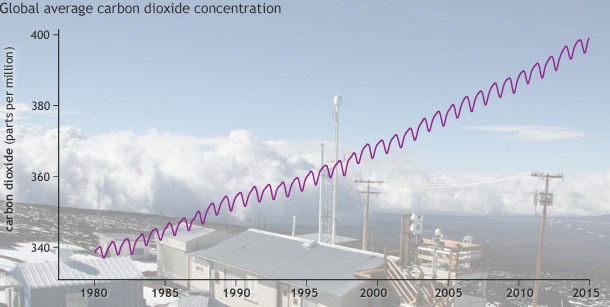NOAA records for June and first half show 2015 on way to becoming hottest year

Temperatures for June and the first half of the year have broken previous records and indicate 2015 is well on way to emerge as the hottest one so far, beating last year.
Off-the-charts heat is getting to be a monthly thing, said Jessica Blunden, climate scientist at the National Oceanic and Atmospheric Administration.
June was the fourth month of 2015 that set a record, she told AP.
NOAA records show world average temperature in June hit 61.48 degrees Fahrenheit (16.33 Celsius), breaking last year's record by 0.22 degrees (.12 degrees Celsius).
The first six months of 2015 were also warmer by one-sixth of a degree than the record set in 2010.
June was uniformly warm across the globe, with heat waves in places like Spain, Austria, Asia, Australia and South America. Pakistan lost 1,200 lives to a June heat wave.
Temperature and emissions up in 2014
Meanwhile, four independent global datasets have confirmed an earlier NOAA finding showing that 2014 was the warmest year on record.
While Europe experienced its warmest year on record, more than 20 countries exceeded their previous records.
The globally averaged sea surface temperature was also the highest on record, with notable increase in the North Pacific Ocean.
"A variety of indicators shows us how our climate is changing, not just in temperature but from the depths of the oceans to the outer atmosphere," said Thomas R Karl, L H D, Director, NOAA National Centers for Environmental Information.
The indicators include greenhouse gases; temperatures throughout the atmosphere, ocean, and land; cloud cover; sea level; ocean salinity; sea ice extent; and snow cover.
Major greenhouse gas concentrations continued to rise during 2014. Atmospheric CO2 concentrations reached a global average of 397.2 ppm for the year.
The report, compiled by NOAA's Center for Weather and Climate at the National Centers for Environmental Information, is based on contributions from 413 scientists from 58 countries around the world.
© Copyright IBTimes 2025. All rights reserved.




















